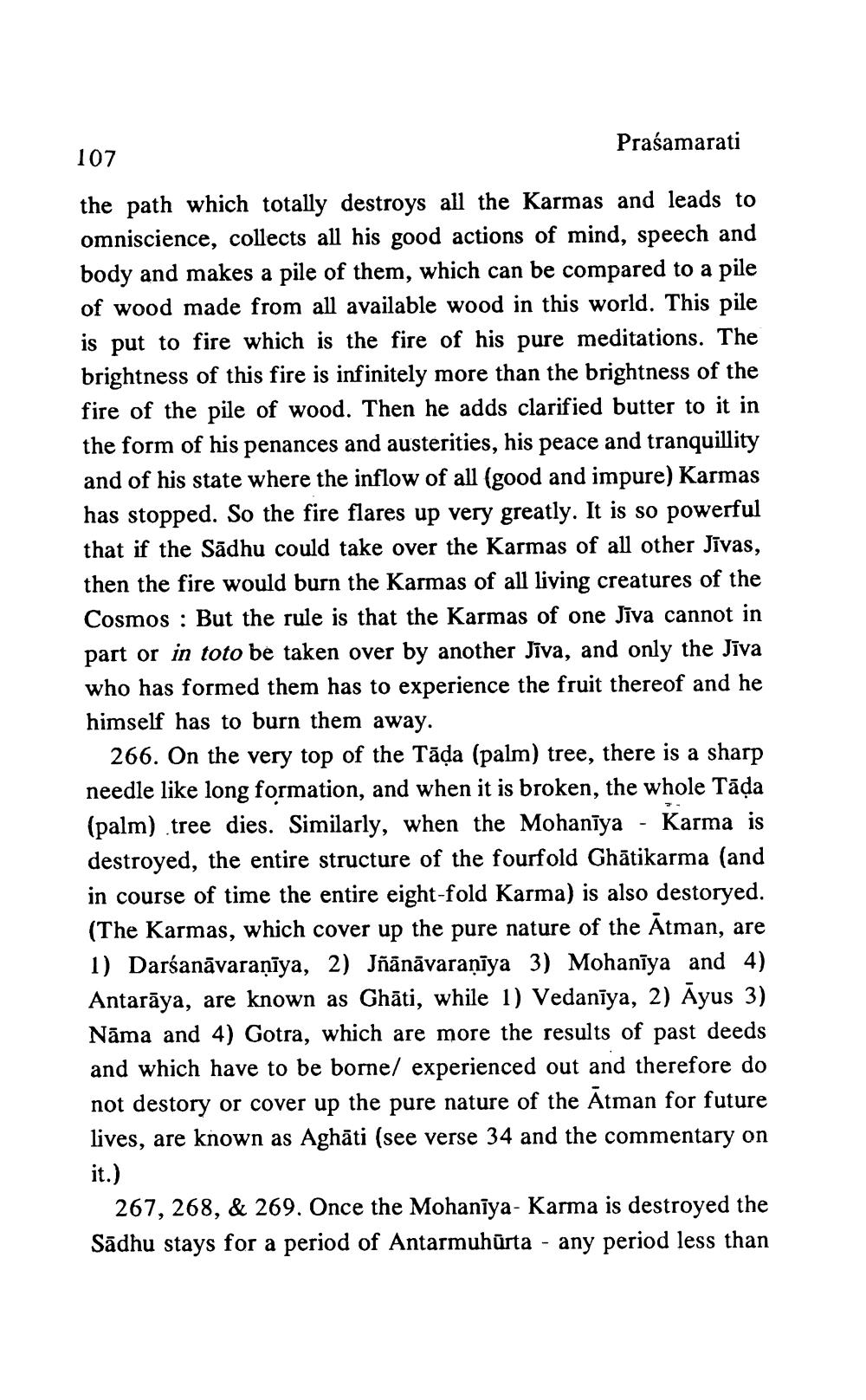________________
Praśamarati
107
the path which totally destroys all the Karmas and leads to omniscience, collects all his good actions of mind, speech and body and makes a pile of them, which can be compared to a pile of wood made from all available wood in this world. This pile is put to fire which is the fire of his pure meditations. The brightness of this fire is infinitely more than the brightness of the fire of the pile of wood. Then he adds clarified butter to it in the form of his penances and austerities, his peace and tranquillity and of his state where the inflow of all (good and impure) Karmas has stopped. So the fire flares up very greatly. It is so powerful that if the Sādhu could take over the Karmas of all other Jivas, then the fire would burn the Karmas of all living creatures of the Cosmos : But the rule is that the Karmas of one Jiva cannot in part or in toto be taken over by another Jiva, and only the Jīva who has formed them has to experience the fruit thereof and he himself has to burn them away.
266. On the very top of the Tāda (palm) tree, there is a sharp needle like long formation, and when it is broken, the whole Tāda (palm) tree dies. Similarly, when the Mohanīya - Karma is destroyed, the entire structure of the fourfold Ghātikarma (and in course of time the entire eight-fold Karma) is also destoryed. (The Karmas, which cover up the pure nature of the Ātman, are 1) Darśanāvaraṇīya, 2) Jñānāvaraṇīya 3) Mohanīya and 4) Antarāya, are known as Ghāti, while 1) Vedanīya, 2) Āyus 3) Nāma and 4) Gotra, which are more the results of past deeds and which have to be borne/ experienced out and therefore do not destory or cover up the pure nature of the Atman for future lives, are known as Aghāti (see verse 34 and the commentary on it.)
267, 268, & 269. Once the Mohanīya- Karma is destroyed the Sādhu stays for a period of Antarmuhūrta - any period less than




